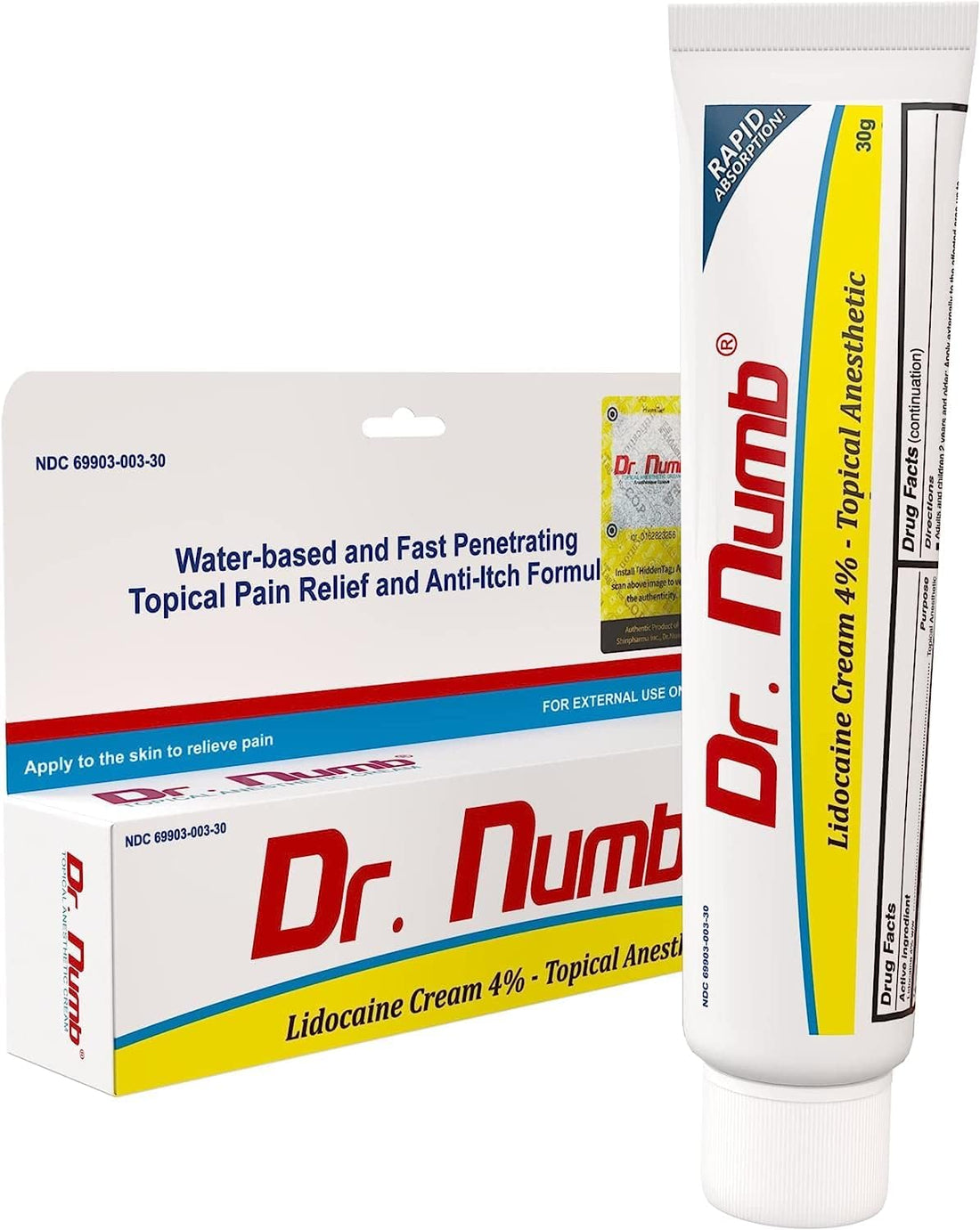
The Truth About Numbing Cream and Tattoos: What You Need to Know
Introduction
Getting a tattoo is an exciting milestone, but the idea of pain can sometimes feel intimidating. Numbing creams are often suggested as a way to reduce discomfort, but they come with their own set of considerations.
By understanding how numbing creams work, their potential limitations, and how they may affect your tattoo experience, you’ll feel more confident and prepared for your session.

How Does Numbing Cream Work?
Numbing creams contain anesthetic ingredients that temporarily reduce sensation by dulling nerve activity in the skin.
• Temporary Relief: Numbing creams are typically applied before tattooing and are most effective for small to medium-sized designs.
• Localized Effect: They help make the tattooing process more tolerable by decreasing sensitivity in the treated area.
Why Do Some Artists Avoid Numbing Creams?
Although numbing creams may sound appealing, there are reasons why some tattoo artists prefer to work without them.
1. Skin Texture Changes
Numbing creams can cause the skin to tighten, which may:
• Make it harder for the needle to penetrate evenly.
• Result in inconsistent ink deposition or patchy results.
2. Limited Effectiveness for Larger Tattoos
For longer sessions, numbing creams often lose their effectiveness, which can lead to discomfort midway through the tattoo.
3. Impact on the Artist’s Workflow
Altered skin texture caused by numbing creams can make it challenging for artists to:
• Execute clean lines.
• Achieve smooth shading.
This is why many professionals prefer untreated skin for precision and consistency.

Should You Use Numbing Cream?
Deciding whether to use numbing cream depends on your preferences and the specifics of your tattoo.
Key Considerations
• Consult Your Artist: Always discuss your concerns with your tattoo artist. They’ll provide guidance based on your design and pain tolerance.
• Realistic Expectations: For smaller tattoos, pain is typically brief and manageable. For larger tattoos, numbing cream may not last through the entire session.
• Pain as Part of the Process: Many clients find that experiencing the sensation adds to the significance of the tattoo.
Why Tattoo Pain Can Be Meaningful
Tattoo pain isn’t just a challenge—it’s often seen as part of the art’s journey.
• A Rite of Passage: Overcoming the discomfort makes the result more rewarding.
• Endorphin Release: During tattooing, your body produces endorphins, which naturally help to ease pain and promote calmness.

Tips for a Comfortable Tattoo Experience
If you’re concerned about pain but want to avoid numbing cream, there are other ways to ensure a smoother session:
1. Prepare Your Body
• Rest well the night before.
• Eat a nutritious meal to maintain energy levels.
2. Stay Hydrated
• Well-hydrated skin responds better to tattooing, making the process easier.
3. Take Breaks
• For extended sessions, ask your artist for short breaks to relax.
4. Practice Breathing Techniques
• Deep, steady breaths can help keep you calm and reduce discomfort.
Why Studio Hon Is Your Trusted Partner for Tattoos
At Studio Hon, we prioritize your comfort and satisfaction from start to finish.
• Experienced Artists: Our team has extensive experience accommodating various pain thresholds and preferences.
• Personalized Consultations: We take the time to discuss your concerns and recommend the best approach for your session.
• Relaxing Environment: From a welcoming atmosphere to attentive care, we’re here to make your tattoo experience unforgettable.

Final Thoughts
While numbing creams can help ease tattoo pain, they may not always be the right choice for every client or design. By understanding their limitations and discussing your options with your artist, you’ll be well-prepared for a successful session.
Ready to start your tattoo journey? Contact Studio Hon today and let our expert artists create a masterpiece you’ll treasure forever.
